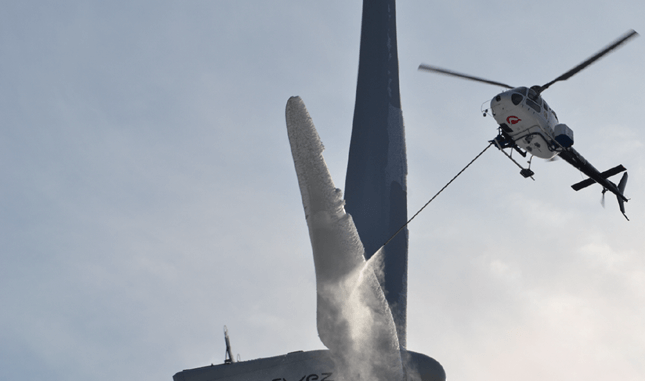
Up until people started dying in Texas due in part to the Deep State love affair with wind farms, most common sense individuals just believed the flawed logic of the exorbitantly expensive, science-denying industry was simply dumb.
We never considered it could be deadly.
But even those of us who’ve watched and opposed the wind industry and its diabolical impacts on rural communities as well as federal and household budgets in the past decade neglected to account for the volume with which puppeted U.S. power companies have become dependent upon this enviro-financial ponzi scheme.
And no sooner did the first fatality reports hit the airwaves during the recent brutal cold snap than sandal-wearing, hemp-shirted wind power advocates were rushed in front of mainstream media cameras to quickly disavow any responsibility for the disaster, even though windmills making up the massive Texas wind farms froze up solid.
It was the bitter cold, windmill proponents said, that hit the natural gas wells and gas-powered electric power plants too, not just the wind farms. All of Texas power generation was under duress. And besides, the Texas power grid doesn’t connect to the rest of the country, and my dog ate my homework, and…and…and…
Sure, no one can blame cold weather. But it was the forced adoption of wind policy by the EPA in Washington, rammed down the throats of states and power companies all the way down to the Texas rancher scooping up those subsidy-dependent windmill site lease checks, that contributed to the Texas disaster and to a lesser degree similar rolling blackouts and other power outages across the Midwest.
Wind power supposedly generates some 23 percent of all the power produced in Texas. Savvy students of wind power understand the tragic Achilles Heel of wind – if the turbine doesn’t turn, no electricity gets produced. What many don’t know is that windmills must be connected to outside electricity to function. If the power’s out where they’re located – they might as well not be standing there, consuming taxpayer money, at all.
Lulled into complacency by warm winters, Texas was actually dumb enough to start decommissioning some of its power plants because planners banked on the wind industry carrying its weight. It was dumb, but it was a way to justify the electric rate increases customers were paying to cover the costs of wind farm power purchases and the immense state tax credits those companies reap in Texas. Of course, those taxes not paid by wind farms get shifted to the backs of other businesses and residents. FUN FACT: In Kansas, wind farms pay no property taxes at all.
As those decommissioned plants fell by the wayside, so did electrical reliability and the security of those depending on it. The Gibbons Creek plant was shut down in 2018, sold and set for demolition in 2020. Big Brown, J.T. Deely, Montecello, Oklaunion and Sandow – all shut down from 2018 to 2020; all dependable coal plants that produced power all the time – not just when the wind blows and it doesn’t get too cold.
As reliance increased on wind power doing its job, the risk of catastrophic failure in a weather emergency increased as well. It all came to a head in the recent cold snap, and the same thing will happen again if U.S. policymakers don’t wise up.
No matter how you slice it, wind farms don’t produce enough power to be a viable alternative to other power sources; they’re inefficient, voraciously expensive and they don’t work at all if the wind doesn’t blow. Now, we find out they don’t work when it gets really cold. Wind proponents have known most all these facts for better than a decade, but they’ve chosen to ignore them in pursuit of the bounty of federal tax credits and the near-complete exemption from any kind of state or local taxes other industries have to pay.
Now we’ve learned that sometimes, what you choose to ignore can kill you.
Dane Hicks is publisher of The Anderson County Review in Garnett, Kansas.
